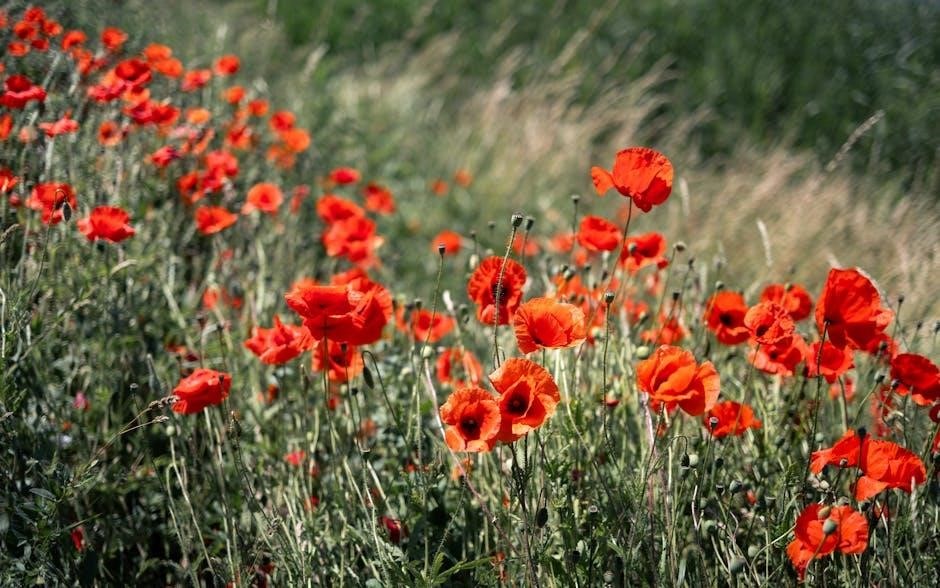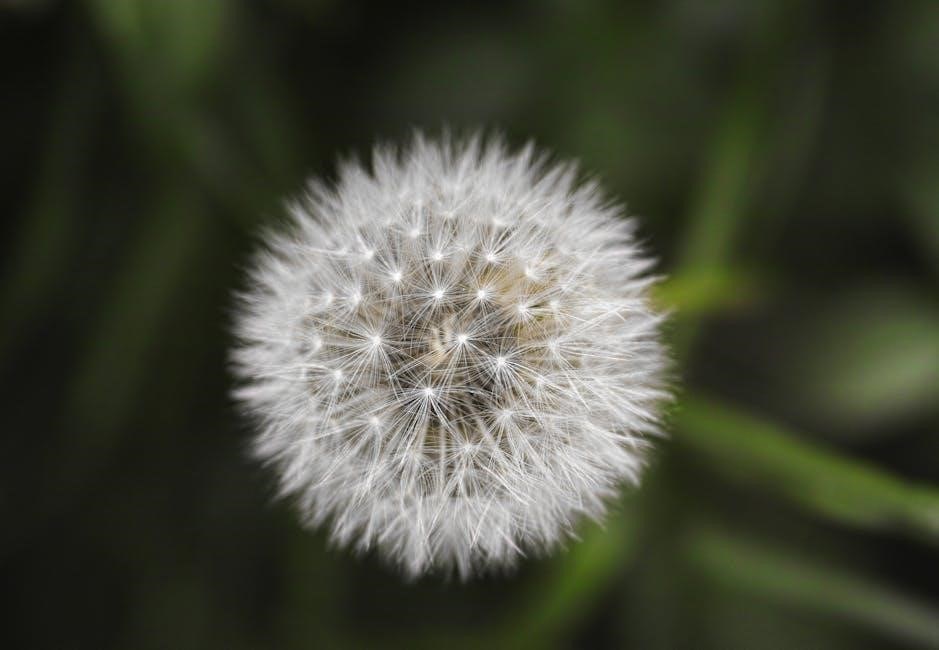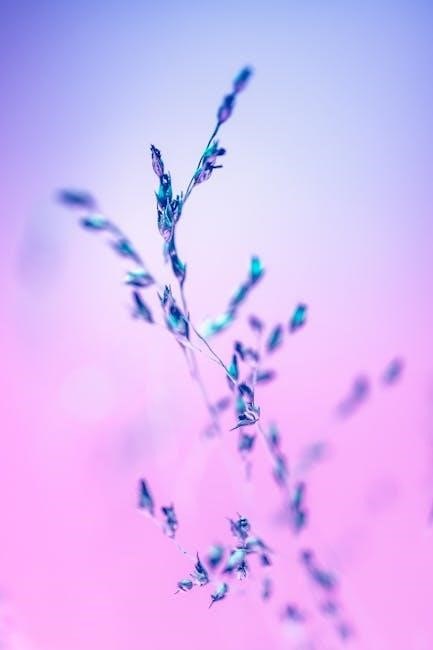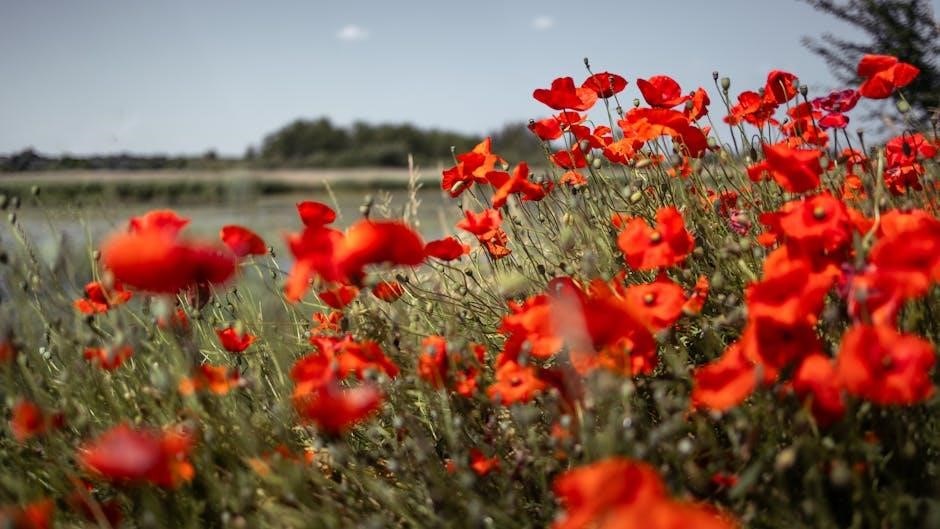
The Mustard Seed Garden Manual of Painting, published in 1679 under Li Yü’s patronage, is a key text in Chinese art, influencing Chinese and Japanese artists.
1.1 Historical Background and Publication Details
The Mustard Seed Garden Manual of Painting was first published in 1679 during the early Qing dynasty. Commissioned by the essayist and playwright Li Yü, it was named after his estate, the Mustard Seed Garden. The manual is a multicolor woodblock series that serves as a comprehensive guide to Chinese painting techniques and theory.

Its initial publication marked a significant milestone in Chinese art education, becoming a foundational text for artists. Over the years, it has been reprinted and widely distributed, influencing both Chinese and Japanese artists. The manual is celebrated for its detailed illustrations and practical wisdom, making it a cornerstone of Chinese artistic tradition. Its enduring popularity underscores its importance in preserving and transmitting Chinese painting methods.
1.2 The Role of Li Yü and the Mustard Seed Garden
Li Yü, a prominent essayist and playwright, played a pivotal role in the creation of the Mustard Seed Garden Manual of Painting. His estate, the Mustard Seed Garden, served as a cultural hub, inspiring the manual’s name and content. As a scholar and patron of the arts, Li Yü sought to preserve and promote Chinese painting traditions. The manual, commissioned under his guidance, became a cornerstone of art education, offering detailed techniques and philosophical insights. Its publication in 1679 marked a significant contribution to Chinese art, with Li Yü’s vision shaping its legacy as a foundational resource for artists. His influence extended beyond China, impacting Japanese art as well.

Key Elements of Chinese Painting Theory in the Manual
The manual emphasizes harmony, balance, and the expressive use of brushwork and ink, reflecting the philosophical foundations of Chinese art, such as yin-yang and qi.
2.1 Principles of Chinese Painting and Their Philosophical Foundations
The Mustard Seed Garden Manual outlines principles rooted in Daoist and Confucian philosophies, emphasizing harmony with nature. Key concepts like qi (energy) and yin-yang guide composition and technique.
2.2 The Importance of Brushwork and Ink Techniques
Brushwork and ink techniques are central to Chinese painting, as emphasized in the Mustard Seed Garden Manual. The manual highlights the importance of varying brushstrokes to convey texture, movement, and emotion. Ink techniques, ranging from light washes to deep tones, create depth and atmosphere. The interplay of brush and ink is not just technical but philosophical, reflecting the artist’s inner state and connection to nature. These methods allow for simplicity and spontaneity, capturing the essence of subjects rather than mere representation. Mastery of these techniques is seen as a path to artistic mastery and spiritual expression.

Techniques and Methods Described in the Manual
The manual details techniques for figure, landscape, and bird-and-flower painting, emphasizing brushwork, ink, and composition to capture the essence of subjects with simplicity and elegance.
3.1 Figure Painting and Portrait Techniques
The Mustard Seed Garden Manual provides in-depth guidance on figure painting and portraiture, emphasizing the use of expressive brushstrokes to convey the subject’s character and emotion. It outlines methods for capturing facial expressions, gestures, and attire, ensuring a balance between detail and simplicity. The manual stresses the importance of understanding human anatomy and posture, while also incorporating principles of harmony and proportion. These techniques, rooted in traditional Chinese aesthetics, have been foundational for artists mastering figure painting, offering both practical advice and philosophical insights into the art form.
3.2 Landscape Painting Methods and Composition
The Mustard Seed Garden Manual extensively covers landscape painting, offering techniques for capturing natural scenery with harmony and balance. It emphasizes the use of perspective, layering, and atmospheric effects to create depth. The manual provides detailed instructions on brushwork for mountains, trees, water, and clouds, stressing the importance of simplicity and expressive strokes. Composition is highlighted as a cornerstone, guiding artists to arrange elements for visual flow and emotional resonance. These methods, deeply rooted in Chinese aesthetics, have inspired generations of artists to master the art of landscape painting, blending technical skill with philosophical insight.
3.3 Bird-and-Flower Painting Techniques
The Mustard Seed Garden Manual dedicates detailed sections to bird-and-flower painting, a quintessential genre in Chinese art. It outlines techniques for rendering intricate feather textures and floral patterns, emphasizing harmony between subjects. Brushwork is highlighted for its expressiveness, with varying ink tones to capture life-like qualities. The manual instructs on balancing composition to evoke naturalistic scenes, blending realism with artistic interpretation. These methods, rooted in traditional aesthetics, guide artists to infuse their work with vitality and grace, reflecting the manual’s enduring influence on this beloved artistic genre.
Influence of the Mustard Seed Garden Manual
The Mustard Seed Garden Manual profoundly shaped Chinese and Japanese art, serving as a foundational textbook for artists. Its techniques and principles guided generations, inspiring professional careers.
4.1 Impact on Chinese Artists and Art Education
The Mustard Seed Garden Manual of Painting became a cornerstone of Chinese artistic education, shaping generations of artists. It standardized techniques and principles, offering a comprehensive guide for mastering various painting styles. Many Chinese artists began their professional journeys with this manual, which emphasized harmony, balance, and the expressive use of brushwork. Its influence extended beyond technique, fostering a deeper understanding of the philosophical underpinnings of Chinese art. The manual’s widespread adoption ensured the preservation of traditional methods, making it an indispensable resource for both students and established artists, solidifying its role in the evolution of Chinese art education.

4.2 Adoption and Adaptation in Japanese Art
The Mustard Seed Garden Manual of Painting profoundly influenced Japanese art, particularly during the Edo period. Japanese artists embraced its techniques and theories, integrating them into their own practices. The manual’s emphasis on brushwork, composition, and philosophical depth resonated with Japanese aesthetic principles. Many Japanese artists studied and copied its illustrations, adapting the methods to create works that blended Chinese techniques with Japanese sensibilities. This cross-cultural exchange enriched Japanese art, fostering a deeper understanding of Chinese artistic traditions while inspiring innovative adaptations. The manual’s impact on Japanese art education and practice remains a testament to its universal appeal and enduring influence.

The Legacy of the Mustard Seed Garden Manual

The Mustard Seed Garden Manual remains a cornerstone of Chinese artistic education, preserving traditional techniques and inspiring future generations with its timeless wisdom and aesthetic principles.
5.1 Its Role in Preserving Chinese Artistic Traditions
The Mustard Seed Garden Manual of Painting serves as a vital repository of Chinese artistic traditions, meticulously documenting techniques, philosophies, and cultural values. It ensures the continuity of classical methods, such as brushwork and ink application, while encapsulating the spiritual essence of Chinese art. By providing detailed instructions and illustrations, the manual has become an indispensable resource for artists and scholars alike. Its preservation of historical practices has allowed future generations to understand and emulate the mastery of traditional Chinese painting, maintaining its relevance in contemporary artistic education and practice.
5.2 Modern Relevance and Applications in Art
The Mustard Seed Garden Manual of Painting remains a cornerstone of modern artistic education, inspiring contemporary artists and educators worldwide. Its timeless principles, such as harmony and balance, continue to influence diverse art forms, from traditional Chinese painting to digital media. Modern artists adapt its techniques to explore new creative possibilities, blending ancient wisdom with modern innovation. The manual’s emphasis on simplicity and expressiveness resonates with global art practices, making it a bridge between traditional and contemporary art. Its enduring relevance underscores its value as a living document, fostering cross-cultural exchange and artistic evolution in the modern era.
Cultural Significance of the Manual
The Mustard Seed Garden Manual of Painting is a cultural treasure, bridging Chinese and Western artistic traditions. Its influence spans centuries, shaping global understanding of Chinese art.
6.1 As a Bridge Between Chinese and Western Artistic Traditions
The Mustard Seed Garden Manual of Painting has long served as a cultural bridge, connecting Chinese art with Western traditions. Its influence can be seen in various forms such as icon painting, where its principles and techniques have been adapted. The manual’s emphasis on brushwork and ink techniques resonates with Western artistic approaches, making it a valuable resource for cross-cultural artistic exchange. This connection highlights the manual’s enduring legacy in fostering global artistic understanding and collaboration, ensuring its relevance in both Eastern and Western contexts.
6.2 Its Contribution to the Global Understanding of Chinese Art
The Mustard Seed Garden Manual of Painting has played a pivotal role in shaping the global understanding of Chinese art. As a comprehensive guide, it has introduced the principles, techniques, and philosophical foundations of Chinese painting to audiences worldwide. Its influence extends beyond China, with artists and scholars in Japan and the West adapting its teachings. The manual’s detailed illustrations and explanations have made it an invaluable resource for cross-cultural artistic exchange, fostering appreciation for Chinese aesthetic traditions. By bridging cultural gaps, it continues to inspire contemporary artists and educators, ensuring its legacy as a cornerstone of global art history and education.